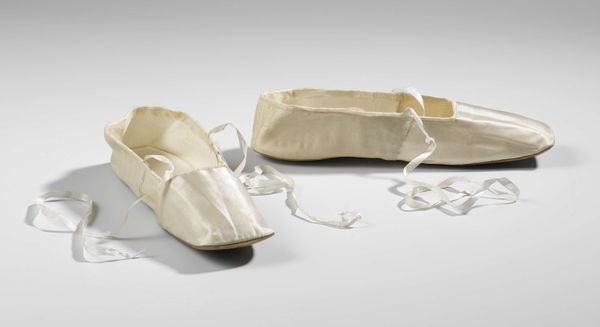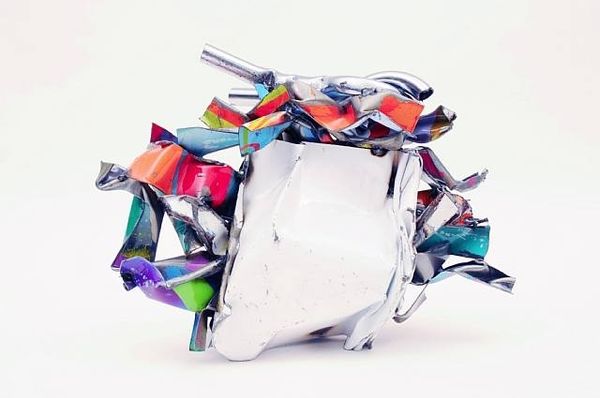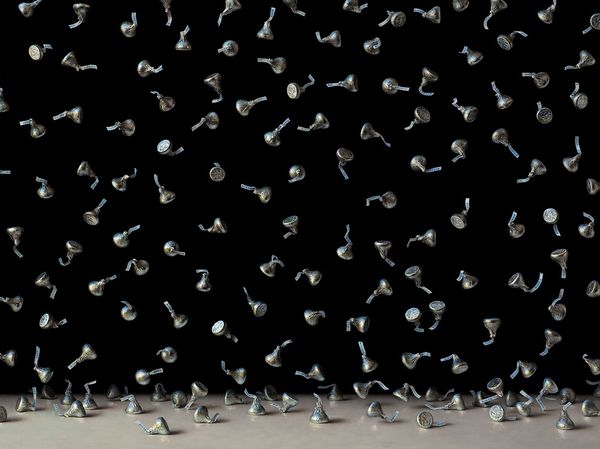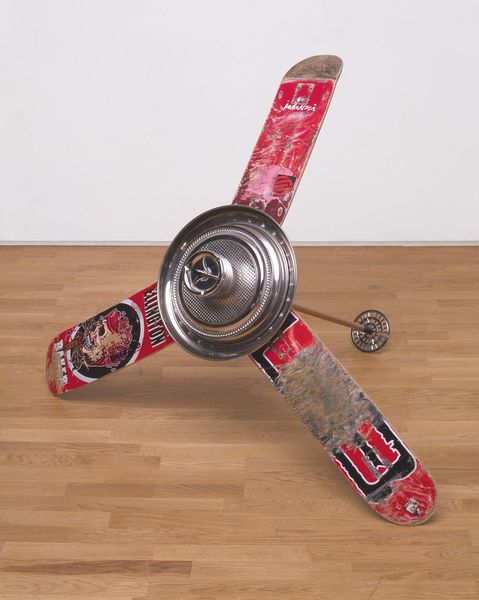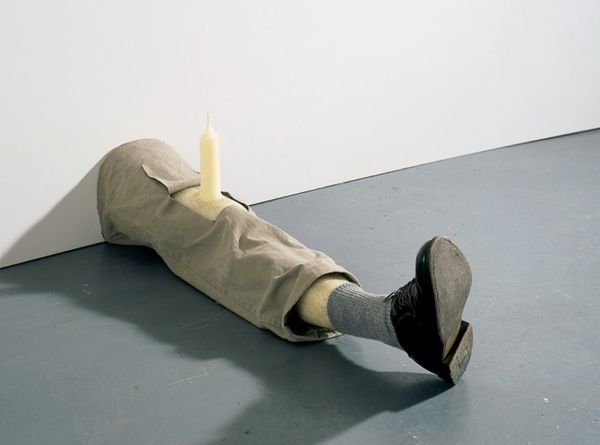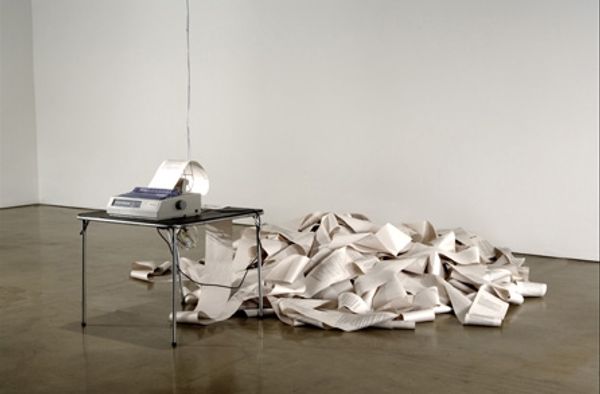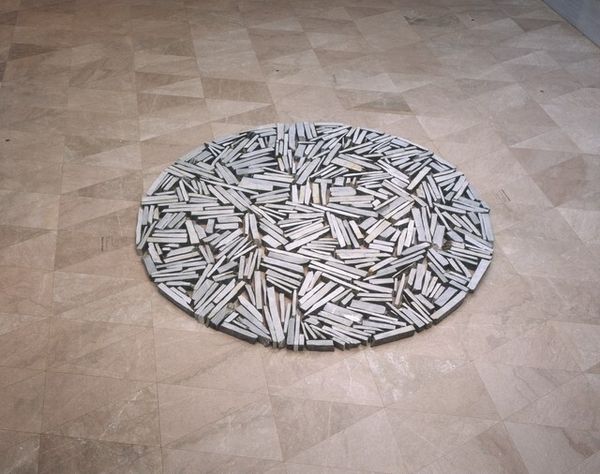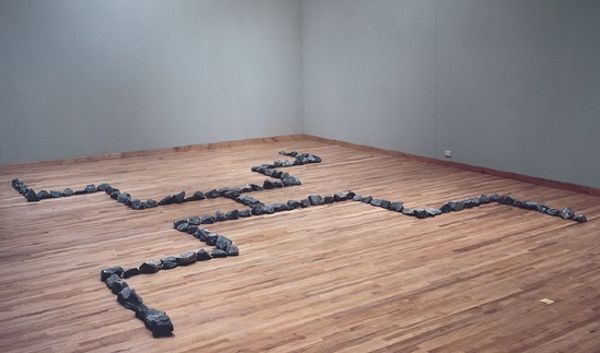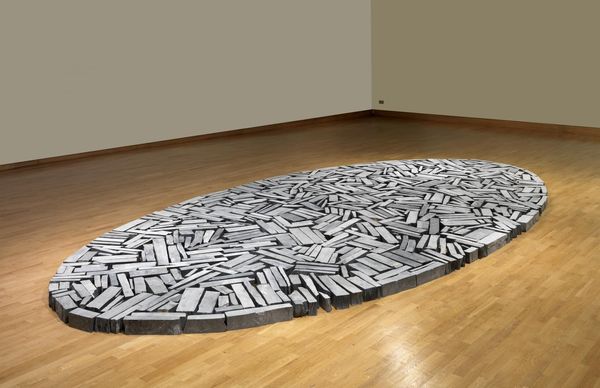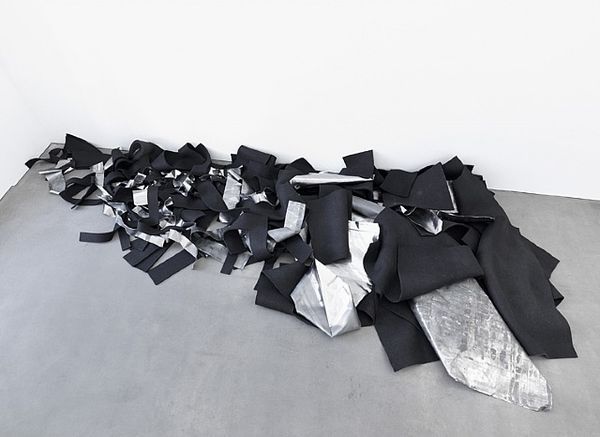
Dimensions: displayed: 270 x 1525 x 1520 mm
Copyright: © Marc Quinn | CC-BY-NC-ND 4.0 DEED, Photo: Tate
Curator: Marc Quinn's "The Etymology of Morphology" presents us with a peculiar scene. Various cast forms, seemingly melting, are scattered across the floor. What's your initial reaction? Editor: It evokes a sense of fragility, doesn't it? This idea of forms dissolving is very powerful, especially given the shiny, metallic quality. It feels like a critique of idealized forms, maybe? Curator: Precisely. Quinn often explores the body and its representation. These pieces, displayed in the Tate, suggest a deconstruction of classical sculpture ideals. The smooth, reflective surfaces further emphasize this almost perverse beauty. Editor: Right, and the title "Etymology of Morphology" hints at uncovering the origins of form itself, questioning how we arrive at our physical ideals. It's like a commentary on how society shapes bodies. Curator: Indeed. By presenting these "melting" forms, Quinn might be challenging the art world's historical obsession with perfectly rendered bodies and the associated social pressures. Editor: It encourages us to rethink our obsession with stability and perfection, in art and beyond. Food for thought. Curator: Absolutely. This work offers a unique perspective on the ongoing debate surrounding body image and representation in art.
Comments
tate 6 months ago
⋮
http://www.tate.org.uk/art/artworks/quinn-the-etymology-of-morphology-t07239
Join the conversation
Join millions of artists and users on Artera today and experience the ultimate creative platform.
tate 6 months ago
⋮
Several body parts are recognisable in this piece, which is made from blown and cast glass, silvered on the inside. It suggests a life-sized figure which has dissolved into, or is being assembled from, mercury-like puddles. Quinn's title suggests an analysis of the relationship between form and meaning: 'etymology' is the study of the way words develop, while 'morphology' is the study of the forms of things. Gallery label, August 2004


